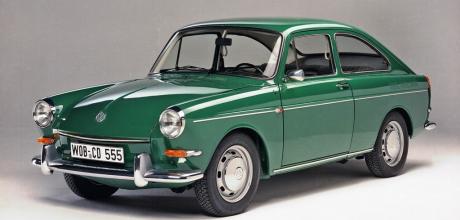First car with onboard diagnostics 1968 Volkswagen Type 3
Forget supercar crash videos or the spectacle of a hideous aftermarket body kit bolted onto a modern classic, the one sight guaranteed to make the steeliest petrolhead recoil in horror has to be the yellow glow of a “check engine” light. Gut-churning it may be but the surface-level indicators of a complex diagnostic system are preferable to the potentially engine-crippling faults to which they’re pointing.
THE INNOVATORS
The cars we drive today were influenced by these pioneers
An onboard diagnostic system (OBD) is essentially a part of your car’s “brain” or ECU (electronic control unit) that oversees everything electrical; from the ignition and fuel injection, through to ancillaries such as your headlamps and climate control. Any problems detected by the array of sensors throughout a car’s engine and electrical system will return an error code that ringfences the offending component or system.
A trip to your nearest OBD-II-equipped technician or dealership should pinpoint the problem and a targeted solution will soon have you on your way. Automotive troubleshooting wasn’t always so easy or straightforward. Before the widespread application of onboard electronic diagnostics, it required keen senses and a healthy dose of mechanical know-how to spot potential faults before they manifested as serious problems.
When Volkswagen introduced fuel injection to its Beetle successor, the Type 3, in 1968, the Bosch D-Jetronic system was overseen by a computer.
Although it did lack digital components like integrated circuit chips, it made use of resistors and capacitors as part of a sensor array that monitored parameters such as load, speed and temperature of the engine. Using this feedback, the system determined the best air-fuel mixture needed to reach the engine cylinders. Owing to its relative complexity at the time, the D-Jetronic unit’s ECU feedback could be used to troubleshoot problems within the system via a basic Grundig-built tester.This tester plugged into the ECU and featured 16 sensor presets linked to a simple red/yellow/green light array. Toggling through the presets, it was possible to roughly identify parts of the injection and ignition system according to the light colour combination on the unit’s panel. While the results were rudimentary, it still reduced the technician-dependent deduction and spanner-work to isolate a fault within the ignition system.
This basic OBD ushered in the modern industry-standardised OBD-II (second-generation onboard diagnostics) which utilises a digital reader that plugs into an ECU-connected port to diagnose problems right down to circuit-board level and is still in use.
THEY ALSO PAVED THE WAY
- 1958 SAAB GT750 The GT750 would become the first car to feature a trip computer. The analogue system gave information on speed and distance and was originally developed for rallying by Swedish watchmaker, Halda. 1958
- CHRYSLER 300D The 300D and a couple of its stablemates would become the first series-production recipients of Bendix’s Electrojector; an electronically controlled-manifold injection system-that would father the electronic fuel injection systems widely used today.
- 1968 FIAT DINO The same year that Volkswagen took its first steps into the auto-electric era with its basic OBD system, Fiat would introduce electronic ignition to the industry via the 2,0- litre V6 of its Dino sports coupé.
- 1978 CADILLAC SEVILLE Although-marketed as a trip computer, GM’s Cadillac Trip Computer served as the first example of an ECU that used a microprocessor chip to oversee multiple engine functions such as fuel injection and spark timing.


